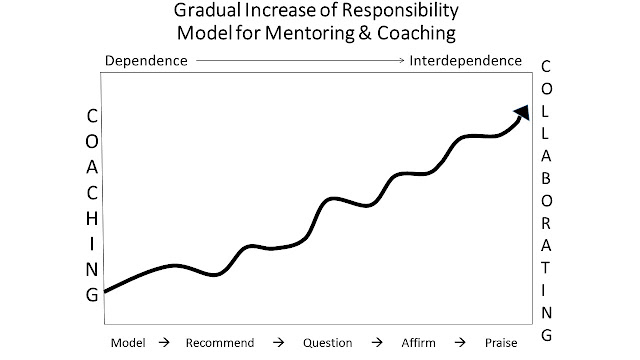During a meeting with mentors this week, one of them described the lack of time she’d had to talk with her student-teaching intern. “When we finally found time to talk, I had so many ideas to share. After I finished making recommendations, she said she was overwhelmed.”
· If you feel responsible for filling silences in a conversation, you may be talking too much. Maybe, like Tasha, you are uncomfortable with silences. But silences are a normal part of a coaching conversation. Instead of seeing silence as the sign of a failed conversation, recognize that quiet pauses can be thought-filled and productive. Don’t fill silences by talking about anything that comes to mind. When there’s a pause, practice holding back for a few seconds. Give the teacher a chance to be the one who restarts the conversation.
· Do your friends joke that you talk a lot? That may be their non-confrontational way of alerting you to your chattiness. If you pick up on such jokes, it’s probably time for tongue restraint! Check yourself to see whether natural chattiness spills over into coaching conversations.
· If the teacher you are talking to stops making eye contact, or you see a glazed-over look or a gaze into the distance, it’s time to stop talking. It’s she’s playing with an object or looking at her phone, she has probably switched off while you were speaking. You can always apologize, saying, “Sorry, I got carried away. What do you think about that?”
· If you catch yourself interrupting, that’s a sign you may be talking too much. Repair the situation by quickly redirecting the conversation back to the teacher. Say something like, “Apologies for interrupting; please go on.”
· If you’re in a conversation and the other person’s responses are mostly, “Yeah,” “Mmmm,” and “Uh-huh,” you are talking too much. The one who does the talking does the learning, so brief responses from the teacher are a sign that the coaching conversation is unproductive.
· Do you have
regrets after a conversation, wondering, “Why did I say that?” Maybe you get
carried away during a conversation and overshare, then later feel uneasy about
what you’ve said, If this happens, you may be talking too much.
Asking questions is one way to give the teacher more space to talk. Increasing teacher talk may solve a coach’s overtalking problem. After asking a question, focus on your listening skills. Instead of thinking about how you are going to respond, give your full energy to what is being said.
If you catch yourself going off on tangents or repeating yourself during a coaching conversation, rein in your tongue by asking a question and then listening deeply to the teacher’s response. Stop yourself from talking too much. A productive coaching conversation is one where the teacher does more of the talking.
Coaching conversation hearts:
https://www.thecoachingsketchnotebook.com/2021/02/coaching-conversation-hearts.html
Five strategies for avoiding burnout:
https://www.edutopia.org/blog/positive-strategies-avoid-stress-burnout-donna-wilson-marcus-conyers
Embedding affirmation in daily practice:
https://blog.teachboost.com/the-power-of-affirmation
Creating and using stories in the classroom (describes a kindergarten setting, but please consider the value of stories for learners of all ages!):
https://ccira.blog/2022/01/25/storytelling-and-beyond/
This SEL-focused episode of the 10 Minute Teacher Podcast shares insights for helping children learn now:
https://www.coolcatteacher.com/sel-spotlight-dr-marc-brackett-how-kids-learn-right-now/
That’s it for this week. Happy Coaching!
Was this helpful? Please share!
Want to know about new posts? Click “Follow” (bottom right)
Follow on Facebook at: facebook.com/mycoachescouch or Twitter @vscollet for more coaching and teaching tips! You can also find me at VickiCollet.com




